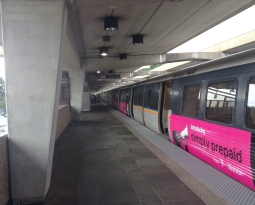Are Commutes A Barrier To Getting Employees Back In The Office?
The COVID-19 pandemic has shifted commuting patterns with many employees preferring to work either 100% remote or have a flexible hybrid work schedule for the perceivable future. American workers are looking for companies that will offer these types of working schedules and are even willing to sacrifice pay for the ability to work from home. But why is there such a large demand for more remote work?
Commutes as a Barrier
People’s behavior has changed dramatically towards being required to return to a physical office location. Commuting serves as a major barrier for employees as longer commutes inhibit employees from accessing childcare services or being able to balance a healthy work/life balance. Simply put, people want to improve their daily commute. The pandemic has shown that employees appreciate the extra time not being spent commuting, and employers are realizing they are able to retain quality employees and save money by offering hybrid/remote work opportunities to their employees.
The Atlanta Regional Commission conducted a Regional Commuter Survey to assess commuting patterns in Metro Atlanta. The survey found that four out of 10 commuters consider the length of their commute as their primary factor in relocating their residence or work location. Employees prefer to have shorter commutes and are willing to change jobs or change homes to decrease their stress and frustration towards commuting. Demand for employees to work primarily remote has continued to increase and reasons for working remote primarily are associated with stress reduction and financial savings components.
According to the March 2021 PwC Workforce Pulse Survey of U.S Workers, one-fourth of respondents are willing to move more than 50 miles away from their office location, influencing employees to look to fully remote or hybrid employment positions rather than 100 percent in-person. U.S workers over the past few years have been increasingly growing intolerant of long commutes, with commutes longer than 30 minutes being viewed negatively and playing a significant factor in how employees select companies.
Flexible Benefits as the Solution
It’s clear that commuting to a physical office location is no longer an accepted daily habit. However, most employees will be required to return to an office at least some of the time. Companies that provide equitable and accessible commute solutions for all employees will stand out as an attractive employer.
Flexible commute solutions can come in a variety of benefits and packages, but the primary goal is to expand offerings. A monthly parking permit or monthly transit pass will no longer fit the needs of the hybrid work force. Flexible benefits may include daily or weekly parking passes, 10 or 20-trip transit passes, guaranteed rides home (Uber/Lyft credit), stipends for active commutes and more.
To further attract and retain quality talent, employers would benefit from demonstrating a genuine commitment to environmental issues through implementation of corporate sustainability goals. By offering alternative commuting options, this not only provides a financial benefit for your employees but commits you to achieving carbon neutrality goals and developing a more sustainable transportation model – further incentivizing employees to return back to the office.
Retaining quality employees is critical in today’s time. Corporate leaders should prioritize the needs of their employees and show their commitment to adopting policies that will promote sustainability. This will serve as a valuable resource for companies to attract quality employees.
How to Implement Flexible Solutions
Each company will have unique challenges and needs in regards to employee commute solutions. Some companies have the ability to dedicate internal teams that can work to identify the most effective strategies, however, if you do not have a team, there are external transportation organizations such as Livable Buckhead that can help.
Livable Buckhead assists employers with employee commute programs by providing services that address employee mobility concerns and analyze trends in employee commute patterns. Livable Buckhead’s services include employee surveying, mobility planning, strategy recommendations, and implementation of commute benefits to ensure each employer has a successful program.
Determining the appropriate pathway to take in offering alternative transportation benefits to your employees is crucial to maximize participation. Once the needs have been addressed, Livable Buckhead can analyze trends in the data to develop a specialized mobility plan for an employer. A mobility plan offers achievable and accessible recommendations and the methods for their implementation.
Our Mobility Services team can help you make commutes less of a barrier for your employees. Get started now!








